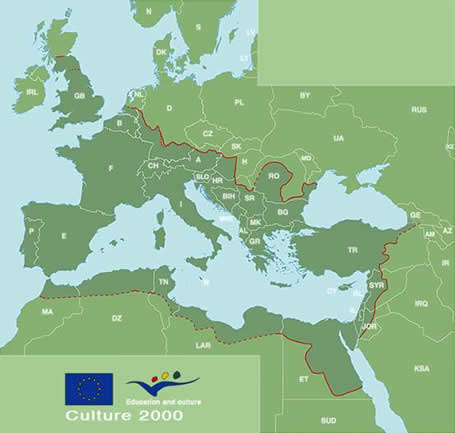UNESCO - World Heritage Site “Frontiers of the Roman Empire”
 Map of the Roman empire under the Emperor Antoninus Pius (AD 138-161)The Roman empire was one of the greatest states that the world has known. It existed in some form for over 2.000 years, from the traditional date of the foundation of Rome in 753 BC to the fall of Constantinople in AD 1453. Even today, the Roman empire fires the imagination, stimulating great literature and exciting films. Law and religion have links to Rome, while it is no coincidence that the treaty establishing the European Community was signed in the eternal city.
Map of the Roman empire under the Emperor Antoninus Pius (AD 138-161)The Roman empire was one of the greatest states that the world has known. It existed in some form for over 2.000 years, from the traditional date of the foundation of Rome in 753 BC to the fall of Constantinople in AD 1453. Even today, the Roman empire fires the imagination, stimulating great literature and exciting films. Law and religion have links to Rome, while it is no coincidence that the treaty establishing the European Community was signed in the eternal city.
The frontier, or Limes, of the Roman empire stretched for over 5.000 km from the Atlantic coast of Scotland across Europe to the Danube delta, from the Black Sea through the Middle East to the Red Sea, and from Egypt across north Africa to the Atlantic coast of Morocco. Some of these frontiers were occupied for several centuries from the time of the Emperor Augustus (31 BC – AD 14). The sea, rivers, mountains and deserts were often used to define the edge of the empire. Where these were absent, artificial frontiers might be constructed.
The German Limes is the longest continuous historical architectural monument in Europe. In 2005 it joined Hadrian’s Wall in northern England, a World Heritage Site since 1987, to create a new trans-national UNESCO World Heritage Site called Frontiers of the Roman Empire. This is the first step towards the creation of a truly multi-national World Heritage Site encompassing countries in Europe, the Middle East and North Africa.
Further sections of the Roman frontiers (like Antonines’ Wall in Scotland or the Danube Frontier in Austria and Bavaria) are currently being prepared for inclusion in the World Heritage Site.

